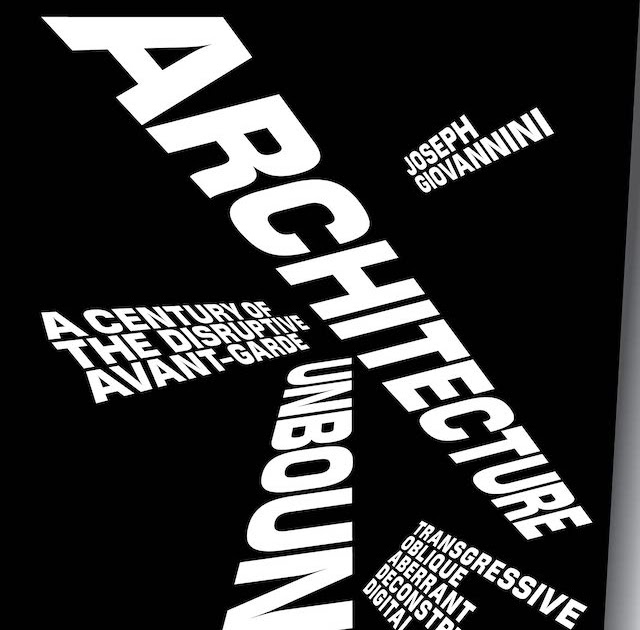Architecture Unbound
Architecture Unbound: A Century of the Disruptive Avant-Gardeby Joseph GiovanniniRizzoli, November 2021Hardcover | 9 x 11 inches | 876 pages | 698 illustrations | English | ISBN: 9780847858798 | $50.00PUBLISHER'S DESCRIPTION:In Architecture Unbound, noted architecture critic Joseph Giovannini proposes that our current architectural landscape ultimately emerged from transgressive and progressive art movements that had roiled Europe before and after World War I. By the 1960s, social unrest and cultural disruption opened the way for investigations into an inventive, antiauthoritarian architecture. Explorations emerged in the 1970s, and built projects surfaced in the 1980s, taking digital form in the 1990s, with large-scale projects finally landing on the far side of the millennium. Architecture Unbound traces all of these developments and influences, presenting an authoritative and illuminating history not only of the sources of contemporary currents in architecture but also of the twentieth-century avant-garde and the twenty-first-century digital revolution in form-making, and profiling the most influential practitioners and their most notable projects, including Frank Gehry’s Guggenheim Bilbao and Walt Disney Concert Hall, Zaha Hadid’s Guangzhou Opera House, Daniel Libeskind’s master plan for the World Trade Center, Rem Koolhaas’s CCTV Tower, and Herzog and de Meuron’s Bird’s Nest Olympic Stadium in Beijing.Joseph Giovannini is a practicing architect who has written on architecture and design for three decades for such publications as the New York Times, Architectural Record, Art in America, and Art Forum, and he has served as the architecture critic for New York magazine and the Los Angeles Herald Examiner.REFERRAL LINKS: dDAB COMMENTARY:On June 23, 1988, Deconstructivist Architecture opened at the Museum of Modern Art in New York. Organized by former MoMA curator Philip Johnson and architectural theorist Mark Wigley, the influential exhibition presented the work of seven architects "obsessed with twisted shapes, warped planes, and folded lines": Coop Himmelb(l)au (Wolf Prix and Helmut Swiczinsky), Peter Eisenman, Frank Gehry, Zaha Hadid, Rem Koolhaas, Daniel Libeskind, and Bernard Tschumi. Three of the architects would go on to win Pritzker Prizes and all of them would go on to have successful practices realizing large-scale projects around the world.Visitors to the exhibition at MoMA — not to mention people who did not see the show but learned about it later, like myself, through its catalog and the subsequent work of the seven architects — would be forgiven for thinking that Johnson and Wigley discovered the architects and any apparent strands binding them, no matter how superficial their readings or tenuous the connections. But buried in the catalog's acknowledgements — the part of a book I used to skip over but now gravitate to — Johnson mentions Aaron Betsky, who "called [his] attention to the telling phrase 'violated perfection'" (also the title of a book Betsky would put out in 1990); Paul Florian and Stephen Wierzbowski, who first proposed an exhibition with that title; and Joseph Giovannini, "another valuable source of preliminary information on the subject." Clearly, numerous people in the late 1980s were cognizant of changes in architecture that were moving the discipline beyond Postmodernism and toward fragmented and disjointed forms that served to provoke and express instability rather than harken to a supposed stable past through the ironic use of historical forms. As such, it isn't necessarily crucial to peg down who discovered or articulated the "movement" first, but it is curious to find out how Deconstruction, the philosophy coined by Jacques Derrida that influenced some architects at the time, most notably Peter Eisenman, got mashed up with Constructivism, the early 20th-century art movement in Russia that most visibly found influence in the paintings of Zaha Hadid. Giovannini, in the introduction to his magisterial Architecture Unbound, which just came out but was primarily written between 1987 and 1992, the architecture critic explains how he created the "Deconstructivist" neologism from "influences in the way architects were inviting other disparate disciplines into their designs." The two terms had little to do with each other, he admits, but he found it an apt description to the work of Gehry, Hadid, and others at the time and a fitting name for the book he was working on. But then, in the middle of 1987, Giovannini went and told Johnson about The Deconstructivists, which would eventually become Architecture Unbound, only to hear later in the year about the exhibition that would soon be opening at MoMA: Deconstructivist Architecture.Although Giovannini describes the background of "Deconstructivism" and the gestation of Architecture Unbound in lengthy sidebars set apart from the main text through the use of smaller, blue text, it's clear throughout the book that it was written by s

by Joseph Giovannini
Rizzoli, November 2021
Hardcover | 9 x 11 inches | 876 pages | 698 illustrations | English | ISBN: 9780847858798 | $50.00
PUBLISHER'S DESCRIPTION:
SPREADS:












